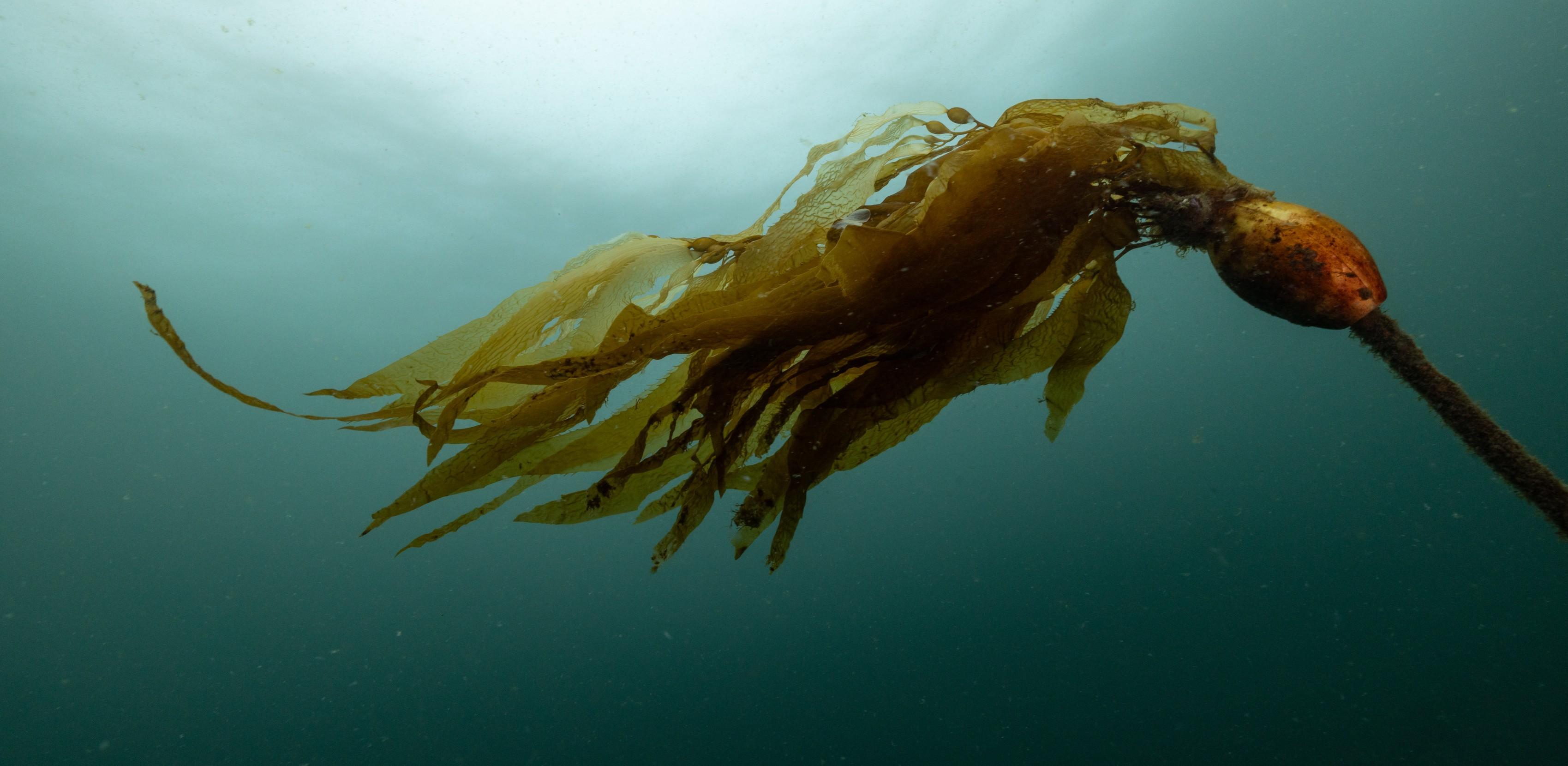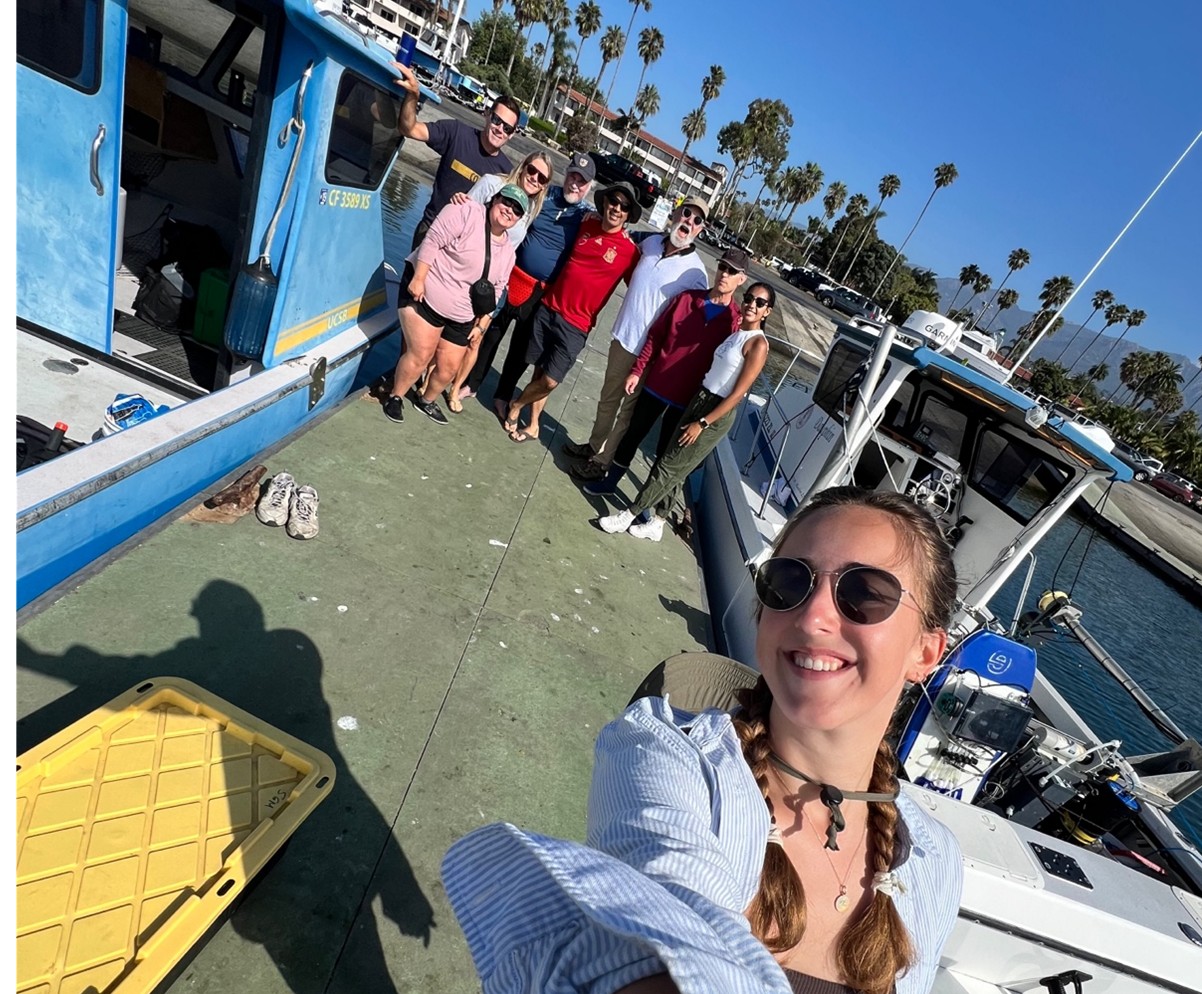
Submitted by Dr C.M. Martin-Jones on Mon, 06/01/2025 - 14:23
Kelp, a type of large brown seaweed that grows in underwater forests, plays an important role in marine ecosystems, providing habitat and food for various marine life. The seaweed grows rapidly, drawing carbon dioxide into its tissues through photosynthesis to be later buried on the seafloor. Because kelp grows much faster than on land plants, cultivating these underwater forests at a larger scale is gaining traction as a possible carbon capture and storage technology.
Researchers from Cambridge’s Department of Earth Sciences and the Department of Applied Mathematics and Theoretical Physics are working together to characterise and quantify the carbon dioxide removal potential of giant kelp forests.
Cambridge Earth Sciences PhD student Zhenna Azimrayat Andrews visited the Ocean Rainforest Inc.’s (ORI) pilot kelp farm, off the California coast. She and a team of researchers, led by Stanford University and other universities in California (UCSB, UCSD, UCI), collected data on the fluid dynamics, biogeochemistry and carbon dioxide removal potential of the seaweed. The results will show how much carbon dioxide is absorbed by the kelp as water flows through the farm, data that will be used by the team back in Cambridge to improve model simulations that test the carbon capture potential of seaweed farming at a global scale.
Zhenna recently presented her work at the Cambridge Centre for Climate Science Winter Symposium. She also wrote about her fieldwork on our blog.
Team photo with Prof. Nick Nidzieko (UC Santa Barbara), PhD student Madolyn Kelm, Prof. Kristen Davis, Prof. Stephen Monismith (Stanford), Prof. Geno Pawlak (UC San Diego), Prof. Rob Dunbar, Dave Mucciarone (Stanford), intern Savanna Saunders, and PhD student Zhenna Azimrayat Andrews (Cambridge).
Feature image credit: Alasdair O’Dell, SAMS / Marine Scotland on Flickr. CC BY-NC 2.0.

